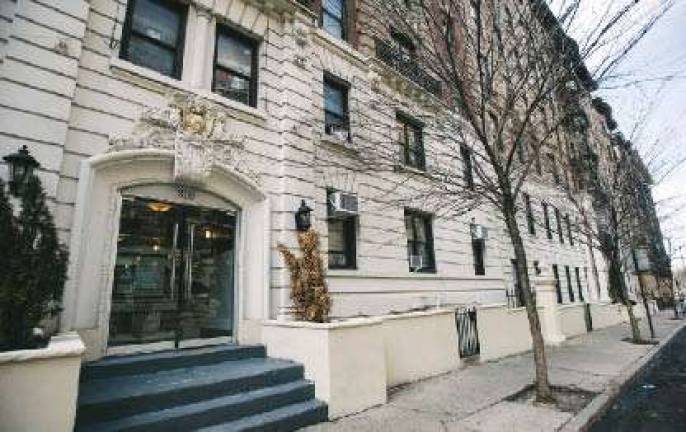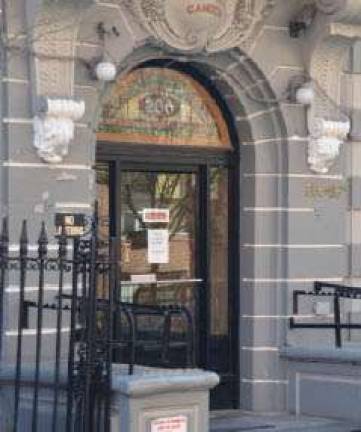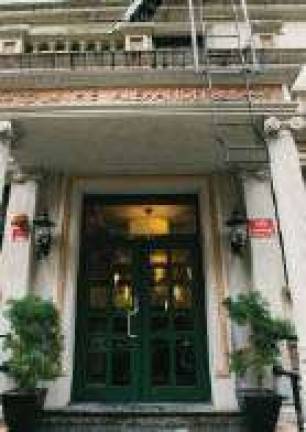Empty rooms on the U.W.S.



Housing
The Upper West Side is plagued by vacant SROs, despite surging homelessness
Upper West Side The only indication that something's amiss at 206 W. 95th Street is a sign on the door stating "No Visitors." The residential building looks like any other on the block: six stories of brickwork with a wrought-iron fence out front and a fire escape climbing skyward above the door.
But according to Marti Weithman, president of the SRO Law Project at Goddard Riverside Community Center, the building is a striking neighborhood example of a citywide problem: 206 W. 95th St. is home to 200 SRO units - only one of which is occupied.
In a city where affordable housing is a major issue -- and where the homeless population is the highest since the 1930s -- there nevertheless are hundreds of low-cost rooms sitting vacant on the Upper West Side alone, "because the owners have the money to allow them to sit vacant until they can either completely empty the building, which would increase the value of the building exponentially, or find a more lucrative means to operate the building ? lawfully or not," said Weithman.
SRO stands for Single Room Occupancy, and generally refers to a building that contains a number of rooms which share a building's bathroom and are used to house a single individual at affordable rates.
According to Weithman, the story of 206 W. 95th St. is replicated throughout the Upper West Side: At 307 West 79th Street, there are 63 permanent tenants among 227 total units. Weithman estimates that a pair of SRO buildings on West 95th Street is warehousing about 100 units. Another building in the area, at 306 West 94th Street, has 114 units but only six tenants. That building, Weithman said, has been operated as an illegal hotel for years.
In 2007, the city filed suit against two SRO buildings on West 95th Street to prevent them from operating as illegal hotels, which can be more lucrative for building owners. Now, the city's strategy seems to be to contract with SROs - sometimes in emergency conditions at upwards of $3,000 a month - to house the homeless. And yet, vacancies persist.
What's more, according to the Coalition for the Homeless, homelessness in New York City is at its highest level since the Great Depression. The group estimates there are over 50,000 homeless people, including 12,724 families and 22,712 children, sleeping each night in the city's shelter system.
Lisa Black, a spokesperson for DHS, said the ballpark $3,000-a-month figure that's used in conversations about the city's relationship with SROs is a generalization, but even so, the money they spend on such programs goes to more than just rent.
"The misnomer is that we provide that just to rental support, and that's certainly not the case," said Black, who noted that funds are also used for things like case workers, security, shuttle services and other transportation costs for a DHS client. "We consider any model of housing that's available to us that suits our population."
Still, the issue is one that Weithman and other city leaders feel needs to be addressed.
"During the Bloomberg administration, we saw DHS using its emergency powers to come into SROs in the neighborhood without any community input," said Weithman, who, with the help of allies a few years ago, successfully prevented DHS from putting down roots on West 94th Street. "While we believe everyone has a right to a home, we do not believe that SRO housing is the appropriate place for shelters."
Manhattan Borough President Gale Brewer recently called for creating a tax abatement program that will provide incentive for building owners to start filling up their units.
But the first step to remediating the problem of vacant SROs on the Upper West Side may be in quantifying just how bad it is.
"There is no real data on SROs right now, nor has there been for several years," said Weithman. "The city used to do a housing vacancy survey for SROs based on the census, but I think the last one was done in 2002."